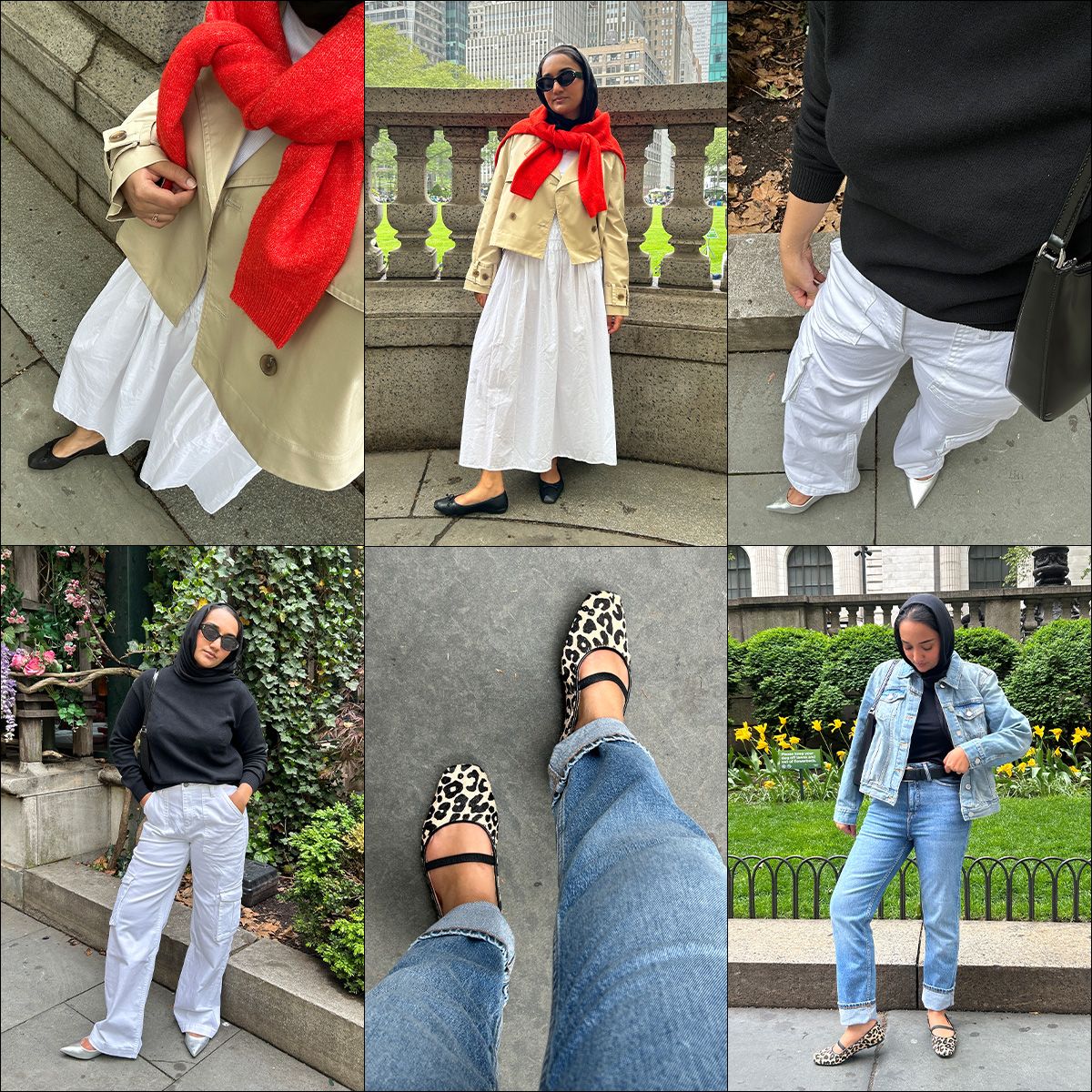
What is “Athleisure”?

While the notion of “athleisure” has been around during the health and fitness booms of the late 80s and early 90s, its branding and marketing may be arguably linked to Lululemon. To quote an article from Retail Dive, “Lululemon didn’t change activewear, it changed apparel. The Canadian brand introduced retail to athleisure”. Instead of producing technical athletic wear, which was already readily available on the market, Lululemon marketed itself for its lifestyle appeal and honed into the intersection of fashion and fitness. Athleisure (as exemplified by Lululemon) is not performancewear, activewear, or sportswear, but rather a take on versatile lifestyle pieces that can go from a low-intensity workout or yoga to a cafe visit without looking out of place.
By the mid-2010s, athleisure had firmly established itself as a mainstream trend. Major fashion retailers and luxury brands began incorporating athleisure elements into their collections, blurring the lines between traditional sportswear and everyday fashion. 2014 saw the rise of “athleisure”, however, towards the end of 2018, the popularity of this trend was beginning to wane. Between 2016 and 2018 athleisure reached its peak popularity with brands like Adidas, and Nike, and athleisure-specific labels seeing significant growth in sales as consumers embraced comfortable and versatile clothing options.
Streetwear Makes Luxury “Accessible”

During a panel with Marc Ecko and Takashi Murakami at ComplexCon, the late Virgil Abloh was quoted as saying “It’s in-between two things. So if I like high fashion and I like streetwear, Off-White is a reminder to be in the middle. I don’t have to choose between high fashion or streetwear. My brand reminds me that it doesn’t have to fit in a box”. Off-White would go on to redefine luxury through the lens of street culture with distinctive branding and strategic collaborations with contemporary brands like Nike and Levi’s.

Under the creative direction of Kim Jones, Louis Vuitton began to incorporate streetwear aesthetics into their collections with various collaborations with streetwear brands and artists. This includes Louis Vuitton’s highly successful collaboration with Supreme in 2017, which featured a blend of Louis Vuitton’s luxury craftsmanship with Supreme’s streetwear credibility.

At Balenciaga, Demna bridged the gap between high fashion and streetwear by embracing oversized silhouettes, graphic prints, and a contemporary edge that appealed to younger, streetwear-oriented consumers. Plus, strategic partnerships with influencers and celebrities alongside the utilisation of social media and digital marketing strategies and various high-profile (albeit controversial drops) seemed to resonate with streetwear culture. Abloh and Demna reshaped their maison’s design aesthetics to resonate with contemporary tastes and by doing so, expanded their appeal and made luxury fashion more accessible to a diverse audience.
The Democratisation of Luxury Fashion in Menswear

It started with the suit. The idea of the “broken suit” was first coined by fashion designer Stefano Pilati. Upon leaving Yves Saint Laurent and joining Zegna, Pilati used the term to describe a suit whereby the suit jacket is paired with a mismatched, often relaxed pair of trousers. Think of it as an early iteration of “corporate COVID attire” — business and meeting-ready from the waist up and easygoing from the waist down. This sartorial take on mismatched menswear separates on one hand symbolised the breakdown of codes of traditional menswear and on the other saw the entry of “athleisure” or the label to describe the pairing of athleticwear with conventionally non-athletic styles of dress. Runways today showcase chinos paired with sports jackets and suit jackets with jogger pants — relaxed silhouettes and loose-fitting trousers that give off the appearance of being more casual are still seen across Louis Vuitton, Dior, Burberry, and Gucci.

Read More: Menswear Codes Prevails In a World of Gender-Neutral Marketing
The face of luxury fashion soon morphed as a blurring of “high and low fashion” saw traditional high fashion create pieces that resembled “everyday wear”. Luxury brands increasingly incorporating streetwear and sporty elements like sneakers and hoodies into their runway collections, democratising fashion by making pieces appear to be more accessible to a range of consumers.
Read More: The Evolution of Fashion Designers to Creative Directors
The Polarising Popularity of Sporty-Fashion Extensions

Social behaviors towards clothing conventions were changing and in 2015 Morgan Stanley Research reported that the US activewear market accounts for annual sales of USD 97 billion. Moncler was ahead of the game with their “It’s not just a trend. It’s a lifestyle” ethos, unveiling the Grenoble collection in 2010 which focused on high-performance sportswear for extreme climates, finessing the brand’s specialty for “high-altitude clothing” which they had been doing since the 1950s.

Read More: Wanderlust is Luxury Fashion’s Not-So-Secret Marketing Tool
Fashion houses were soon quick to follow with the South China Morning Post reporting that Chanel, Dior, and Louis Vuitton were offering couture sneakers while Fendi, Chloé, and Hermès were launching capsule collections specially designed for skiing and cross-fitting. Luxury e-tailer Net-a-Porter launched Net-a-Porter Sports Channel designed for 11 sports including golf, yoga and dance with former Net-a-Porter’s fashion director Lisa Aiken stating “We recognised that there was a massive opportunity in designer sportswear”.
Read More: Championing Sports and Fashion: Athlete House Ambassadors in the Race to the 2024 Paris Olympics

Shift in Industry Practices
As the normalisation of normcore, athleisure and streetwear saw its amalgamation into what has become luxury’s version of “everyday wear” so did the emergence of “See Now Buy Now”. As reported by Forbes, “See Now Buy Now” was adopted as a way of closing the gap by retailers between the time spent on clothes showcased on the runway to when they arrive in stores. To satiate consumers with “drops” and to create a true retail disruption, commercial versions of runway pieces would be made available on the shop floor. However, this business model requires an on-demand manufacturing system designed to quickly produce clothing and stood to only further exacerbate just how much runway collections were no longer inaccessible.
The Cyclical Nature of Fashion
The late 2010s to early 2020s saw the saturation and increasing criticism of athleisure. As athleisure became ubiquitous, it faced criticism for contributing to a decline in dress codes and formal attire standards. Some argued that it undermined professional appearances and lacked creativity in fashion choices. As the definition of the category of “athleisure” continues to evolve, the cyclical nature of fashion trends has seen the resurgence of athleisure-style popular between 2023 and 2024. While brands focus on sustainability, inclusivity, and innovation in materials and design, there is a growing emphasis on versatility and multifunctionality in clothing choices, catering to diverse lifestyles and preferences, highlighting a true amalgamation of tailored styles alongside continued demand for comfortable, athleisure-inspired pieces.
So where does that leave the brand that “started” it all? As of early June 2024, Lululemon’s stock was down by nearly 40 percent as reported by CNN. As more competitors like Alo and Vuori enter the market while longstanding activewear brands like Nike and Adidas continue to deliver contemporary takes on their sportswear pieces, Lululemon too had to diversify by focusing on performancewear. Lululemon’s predicament is that it can never truly compete against sportswear institutions such as Nike and Adidas.
With the popularity of streetwear, the ubiquitous nature of athletic pieces as “everyday wear” and the breaking down of codes to what is and is not considered appropriate corporate attire with the rise of “work from home culture”, the need to segregate and classify “athleisure” as a category all to its own is no longer relevant or needed.
For more on the latest in luxury fashion and style reads, click here.






